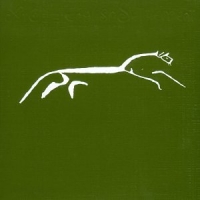/PAlogo_v2.gif)
/PAlogo_v2.gif) |
|
Post Reply 
|
Page 123> |
| Author | |||
MikeEnRegalia 
Special Collaborator 

Honorary Collaborator Joined: April 22 2005 Location: Sweden Status: Offline Points: 21857 |
 Topic: Time Signatures Topic: Time SignaturesPosted: August 11 2005 at 03:18 |
||
|
Love 'em.

|
|||
 |
|||
alan_pfeifer 
Forum Senior Member 
Joined: December 05 2004 Status: Offline Points: 823 |
 Posted: August 10 2005 at 22:05 Posted: August 10 2005 at 22:05 |
||
You wouldn't happen to like Tool now, Would you? Poly's GALORE in their music. |
|||
 |
|||
seabre 
Forum Groupie 
Joined: June 04 2005 Status: Offline Points: 84 |
 Posted: August 07 2005 at 10:27 Posted: August 07 2005 at 10:27 |
||
I remember specifically a concert band piece I played that had revolving 7/8 and 5/8 signatures. It was pretty kick ass. |
|||
 |
|||
seabre 
Forum Groupie 
Joined: June 04 2005 Status: Offline Points: 84 |
 Posted: August 07 2005 at 10:25 Posted: August 07 2005 at 10:25 |
||
|
7/8 isn't *that* rare.
It's really common in higher grade music. It seems like I played a piece with 7/8 every other day in band. |
|||
 |
|||
sigod 
Forum Senior Member 

Joined: September 17 2004 Location: London Status: Offline Points: 2779 |
 Posted: July 29 2005 at 07:22 Posted: July 29 2005 at 07:22 |
||
|
Agreed Cert.
I have seen a lot of solutions explained by many famous drummers in order to
find the groove. Portnoy uses a mathematical approach and breaks down the beats
into smaller parts to make the signature manageable (as mentioned by Cert an others above), Bozzio says that he hums a
familiar bassline from his Zappa days that is in the required time signature. I
guess it comes down to finding a way that good for you and lots and lots of lovely practice. |
|||
|
I must remind the right honourable gentleman that a monologue is not a decision.
- Clement Atlee, on Winston Churchill |
|||
 |
|||
Certif1ed 
Special Collaborator 

Honorary Collaborator Joined: April 08 2004 Location: England Status: Offline Points: 7559 |
 Posted: July 28 2005 at 17:47 Posted: July 28 2005 at 17:47 |
||
Wouldn't that more accurately make it "Apocalypse in 9/4"? I've never heard of anything /8 being anything but compound time, so 9/8 is 3x3 quavers, or three dotted crotchets to the bar however they're presented. Since "Apocalypse..." has 9 quite regular and identifiable beats, I think it's in simple time - and the carving into 4+5 just underlines that for me. Even Genesis could have got it wrong - or were just being deliberately obtuse |
|||
 |
|||
GoldenSpiral 
Special Collaborator 
Honorary Collaborator Joined: May 27 2005 Location: United States Status: Offline Points: 3839 |
 Posted: July 28 2005 at 12:11 Posted: July 28 2005 at 12:11 |
||
|
let us not forget part VI of Supper's Ready: Apocalypse in 9/8, which of course is in 9/8 time with not a triplet, but a 4+5 feel. Also, the main riff tool's 'Scism' is, as far as I can tell, alternating measures of 5/8 and 7/8, but those aren't really 12/8 because 12/8 usually sounds like 4/4 with triplets. the main riff of 'Lateralus' is 3 separate measures of different time signatures: 9/8, 8/8, 7/8. |
|||
 |
|||
chopper 
Special Collaborator 

Honorary Collaborator Joined: July 13 2005 Location: Essex, UK Status: Offline Points: 20074 |
 Posted: July 28 2005 at 11:17 Posted: July 28 2005 at 11:17 |
||
|
"Perpetual Change" on The Yes album always confused me. There's a bit in the middle where the guitars start playing a fast riff and the keyboard comes in with a different riff from the verse. It was years before I realised that the two actually fit together as the guitar riff is in 7/4 and the keyboard is in 6/4 then 8/4 (or whatever) so they're both actually playing 14 beats. Wow! |
|||
 |
|||
goose 
Forum Senior Member 
Joined: June 20 2004 Location: United Kingdom Status: Offline Points: 4097 |
 Posted: July 21 2005 at 10:47 Posted: July 21 2005 at 10:47 |
||
|
|
|||
 |
|||
bityear 
Forum Senior Member 
Joined: April 25 2004 Location: Sweden Status: Offline Points: 171 |
 Posted: July 21 2005 at 10:39 Posted: July 21 2005 at 10:39 |
||
|
[QUOTE=Progbear]
Sixteenth-note-based meters are rare for a reason. Usually they’re there to indicate a tempo shift, i.e.: “double time”. Again, I go to John McLaughlin for an example, namely the track “Dream”. The whole thing is in 15: the slow-motion parts in 15/4, the swinging andante parts in 15/8 and the “oh my God! That’s fast!” parts in 15/16. In such cases, of course, you generally have a notation above that reads [quarter note] = [quarter note], telling you that the actual metronome pulse hasn’t changed, and the rhythmic value of eighth and sixteenth notes are the same as when you were playing at a slower tempo. The exception would be if the change-over in time signature was accompanied by a notation reading [sixteenth note] = [metronome BPM value]. Are they really that rare? Since the early 90's, there's hardly a prog metal record without a bunch of 16th-note-based meters. I think that they've become more popular with the increasing technical skills of the musicians; it's an easy way to make a song more interesting, at least to other people who are into that stuff. Myself, I hardly listen to a song without trying to figure out which meters are used...but then again, I'm a damaged soul. :) And as for that link... well, I guess it quite proves that Vai knew what he was doing.  |
|||
|
www.geocities.com/joelbitars
|
|||
 |
|||
MikeEnRegalia 
Special Collaborator 

Honorary Collaborator Joined: April 22 2005 Location: Sweden Status: Offline Points: 21857 |
 Posted: July 19 2005 at 14:36 Posted: July 19 2005 at 14:36 |
||
|
At this point, I'd like to throw this into the discussion: http://www.vai.com/LittleBlackDots/tempomental.html Just for people who think they've seen all there is to rhythm ... |
|||
 |
|||
goose 
Forum Senior Member 
Joined: June 20 2004 Location: United Kingdom Status: Offline Points: 4097 |
 Posted: July 19 2005 at 14:32 Posted: July 19 2005 at 14:32 |
||
|
+ another Jarzombek oddity - I can't remember the title, I think it's a Spastic Ink track though - all the themes are quintuplets played in 5/4 to 5 bar phrases using 5 notes with a key signature of 5 sharps and 5bs
edit: "gimme 5", maybe? Edited by goose |
|||
 |
|||
goose 
Forum Senior Member 
Joined: June 20 2004 Location: United Kingdom Status: Offline Points: 4097 |
 Posted: July 19 2005 at 14:30 Posted: July 19 2005 at 14:30 |
||
|
It annoys the hell out of me whenever I listen to it! It's just that tiny bit later than I expect Certif1ed: the "official" (I think) OKC book transcribes Paranoid Android in 7/8 in those sections, that's the way I've always thought of it too. |
|||
 |
|||
Progbear 
Prog Reviewer 

Joined: July 14 2005 Location: CA Status: Offline Points: 139 |
 Posted: July 19 2005 at 13:34 Posted: July 19 2005 at 13:34 |
||
I think the most famous example of syncopated 9/8 is Dave Brubeck’s “Blue Rondo A La Turk”, which follows a 2+2+2+3 pattern. Shifting two groups of three into three groups of two like that is called “hemiola”. You hear it a lot more often in 12/8, and is basically the same idea as the alternating bars of 6/8 and 3/4 I gave earlier.
I’m guessing it was notated as 18/8 in the manuscript because of the 5+5+5+3 pattern, so the rhythm didn’t cross bar lines (though you could also notate the guitar arpeggios as 16th notes, and it wouldn’t). On the other hand, “Meeting of the Spirits” has a 5+5+2 pattern, and McLaughlin notated that as 6/4. Go figure!
Try “sixteenth notes”. The North American system is much simpler than all those wacky and seemingly arbitrary British names for the notes. Sixteenth-note-based meters are rare for a reason. Usually they’re there to indicate a tempo shift, i.e.: “double time”. Again, I go to John McLaughlin for an example, namely the track “Dream”. The whole thing is in 15: the slow-motion parts in 15/4, the swinging andante parts in 15/8 and the “oh my God! That’s fast!” parts in 15/16. In such cases, of course, you generally have a notation above that reads [quarter note] = [quarter note], telling you that the actual metronome pulse hasn’t changed, and the rhythmic value of eighth and sixteenth notes are the same as when you were playing at a slower tempo. The exception would be if the change-over in time signature was accompanied by a notation reading [sixteenth note] = [metronome BPM value]. ------------- MIKE (a.k.a. "Progbear") "The only completely consistent people are dead" --Aldous Huxley N.P.:"City Lips"-Vanessa |
|||
 |
|||
bityear 
Forum Senior Member 
Joined: April 25 2004 Location: Sweden Status: Offline Points: 171 |
 Posted: July 19 2005 at 11:44 Posted: July 19 2005 at 11:44 |
||
|
It's great to see Spastic Ink being mentioned! That's probably the craziest band ever...
And that 65/64 thing is WILD. Anyway, about the 7/4 vs 7/8 thing, I think that Money is a good example on a 7/4 track, where you easily count to seven, and that's it. Niacin's Elbow Grease, on the other hand, is a very typical 7/8 track. You get the feeling that each measure is shorter than a common 4/4, while in Money, you somehow get the impression that it is less than TWO 4/4 bars. When you can feel a regular beat that's probably quavers, that's when it's a /4 time. As has already been mentioned, /8 sigs are when the beat is, er, 'cut' somewhere. Worth mentioning is that 9/8 isn't always a 3/4 with triplet feeling. Ozric Tentacles' Coily is in 9/8, but rather than being divided into groups of three, it has a 4+5 feeling, which almost makes it feel like a 'cut' 5/4. And, regarding 5/4 and 9/8, the first section of Dream Theater's Erotomania consists of three 5/4 bars and one bar of 9/8. I would also consider Birds of Fire a 9/8 track, since it becomes easier to read the notes on a sheet if the X/ i lesser. Makes it easier to see the grouings, and to find the 1st beat, and stuff like that. If you want to hear a good and quite distinct example on polyrythmics, try listening to Planet X' Ground Zero. 5/8 vs. 7/8. As for /16 rythms, well, it might get a little tricky. When you count semiquavers, and you 'cut' (gah! These musical terms are so annoying - why doesn't everybody speak Swedish??  )
them, that's when you've got a /16 rythm. I don't have any better
examples in my head, so I'll take Interlude in Milan by Planet X. The
drum beat has the feeling of a 7/8, but, 'cut'. 13/8! The rest of the
band plays a more intricate semiquaver melody over the almost-7/8,
though, which makes it more difficult to hear what sig the song is in.
The groupings are something like 5+5+3; the second group of notes comes
offbeat, but the last three makes it match the drums. )
them, that's when you've got a /16 rythm. I don't have any better
examples in my head, so I'll take Interlude in Milan by Planet X. The
drum beat has the feeling of a 7/8, but, 'cut'. 13/8! The rest of the
band plays a more intricate semiquaver melody over the almost-7/8,
though, which makes it more difficult to hear what sig the song is in.
The groupings are something like 5+5+3; the second group of notes comes
offbeat, but the last three makes it match the drums. 15/16's are often similar to the 7/8, just a bit closer to the 4/4 (although not easier to play..) but they can also be grouped in odd ways. Planet X again: In Moonbabies, after the intro in 11/4 comes a quite hysterical small section that's grouped as 4+5+3+3. 15/16 without sounding like a cut 4/4. After that comes a 7/4 part, and after that comes the coolest one, an 11/16 that's just weird. Great band! |
|||
|
www.geocities.com/joelbitars
|
|||
 |
|||
Progbear 
Prog Reviewer 

Joined: July 14 2005 Location: CA Status: Offline Points: 139 |
 Posted: July 16 2005 at 14:04 Posted: July 16 2005 at 14:04 |
||
Quintuplets in two? A neat idea! That’s not what “Dance of Maya” is, though. It’s a 3+3+4 pattern as opposed to being “in 5”, so I guess it makes a kind of sense. Though a 3+3+2 syncopated eighth-note pattern is a common rhythmic variation of 4/4, and you almost never see it notated as 8/8. Again, unless you’re John McLaughlin  ------------- MIKE (a.k.a. "Progbear") "It is not an obscenity to be free. It is a divine right." --Annette Peacock N.P.:"Remember the Stars"-Universe |
|||
 |
|||
MikeEnRegalia 
Special Collaborator 

Honorary Collaborator Joined: April 22 2005 Location: Sweden Status: Offline Points: 21857 |
 Posted: July 16 2005 at 12:17 Posted: July 16 2005 at 12:17 |
||
|
LDGuy: I agree with all you're saying. Polyrhythms are just taking all of that one step further. And if someone thinks he knows all about rhythm as soon as he can count along and find the "one", he'll be amazed that this is just the beginning ... |
|||
 |
|||
LDGuy 
Forum Groupie 
Joined: May 31 2005 Location: United Kingdom Status: Offline Points: 68 |
 Posted: July 16 2005 at 12:09 Posted: July 16 2005 at 12:09 |
||
|
With regards to time signatures in that PF song, you've got to remember
they are only a label, and a lot of it comes from how the listener
hears the music, or the player thinks about it while he/she is playing
it. In other words, there's no such thing as a "fake" 7/4. With Money,
if PF thought of it as seven 1/4 notes in a bar, then it is 7 notes in
a bar, regardless of what the drums do. The same is true if PF thought
of it as one bar of 4 and one of 3. However, it's an obvious 7 to me -
there is only one downbeat in that riff IMO, and thats on the "one" of
the 7.
... I think the most important thing when working out time signatures is being able to asses where beat one is. You can't worry about subdivisions, polyrhythms, voicings or anything complex until you're able see where beat one is. Being able to do this is more or less difficult depending on the genre you're looking at. In rock, the strongest beat is mostly 1, so that makes it easier. However, in other genres, such as Jazz, the strongest beats may be on different beats. Jazz has strong beats on 2 and 4, and in Samba, beat 1 of a set of two bars is so weak often no instrument will ever hit it full on, the note most phrases start/end on being the "and" or 4 of the previous bar. This makes it very difficult when thinking about pulses in many of these types of music. But once you've mastered assesing where beat one is, you can then count on from there and work out the possible time signature. Time signatures ultimately relate to whatever is being played, and if in doubt, always try and make it as close to 4/4 purely for clarity. I try and relate everything to 4/4 and then look for differences - stuff added, stuff taken away, etc. But sometimes labels play an important role to the phrasings of the music - 21/8 is definitely not the same as three bars of 7/8. Most definately, there will be varied phrasings within the bar which will not make it sound like three bars of 7/8. Bartok tried to get his point across like this when writing his pieces (especially the later pieces in his Mikrokosmos books). He might write a time signature of 3+3+2/8, which is not the same as 4/4, because the sections of the bar are clearly defined - the accents will land as so... 1 2 3 1 2 3 1 2 ¦ 1 2 3 1 2 3 1 2 etc This article deals with the more complex nature of time signatures - http://en.wikipedia.org/wiki/Time_signature As an example, here is a section from Ron Jarzombek's new album, Machinations of Dementia http://www.spasticink.com/rjrem.wmv If you've followed me this far, you'll be able to see the tim signatures go past as he plays them... note: x [a number] indicates the number of bars this sime signature is played for. 4/4 count in 4/4 x 1 5/8 x 1 4/4 x 1 5/8 x 1 4/4 x 1 4/8 x 1 (this could also be 2/4) 5/4 x 5 4/4 x 1 3/8 x 1 4/4 x 1 3/8 x 1 5/8 x 1 4/4 x 1 5/8 x 1 4/4 x 1 5/8 x 1 4/4 x 1 5/8 x 1 and out... Hope this helps you/answers your questions... Edited by LDGuy |
|||

|
|||
 |
|||
MikeEnRegalia 
Special Collaborator 

Honorary Collaborator Joined: April 22 2005 Location: Sweden Status: Offline Points: 21857 |
 Posted: July 16 2005 at 10:30 Posted: July 16 2005 at 10:30 |
||
|
I'm currently listening to The Andromeda Strain (Shadow Gallery: Room V), and after the solo there's a cool section: 5/4 on top of 4/4. There are 5 bars of 4/4, and part of the band plays 4 bars of 5/4 on top of it ... amazing. It creates the illusion of the drummer swapping bass and snare every bar. Polyrhythms RULE. Edited by MikeEnRegalia |
|||
 |
|||
Certif1ed 
Special Collaborator 

Honorary Collaborator Joined: April 08 2004 Location: England Status: Offline Points: 7559 |
 Posted: July 16 2005 at 09:59 Posted: July 16 2005 at 09:59 |
||
|
I hear the hard accent on beat 1, but the accent on beat 4 is much softer, which stops the riff from "swinging" on that beat - it seems to swing around all the beats fairly evenly. Also, some of the rhythms are dotted across two main beats (e.g. notes 2 and 3 in bar 1), which is an unusual practice in 7/8. Most tabs I've seen are in 7/4, and Roger himself describes it this way "Paranoid Android" could well be in 7/8 though - I haven't made up my mind yet as I always stop analysing and start enjoying this one |
|||
 |
|||
Post Reply 
|
Page 123> |
| Forum Jump | Forum Permissions  You cannot post new topics in this forum You cannot reply to topics in this forum You cannot delete your posts in this forum You cannot edit your posts in this forum You cannot create polls in this forum You cannot vote in polls in this forum |